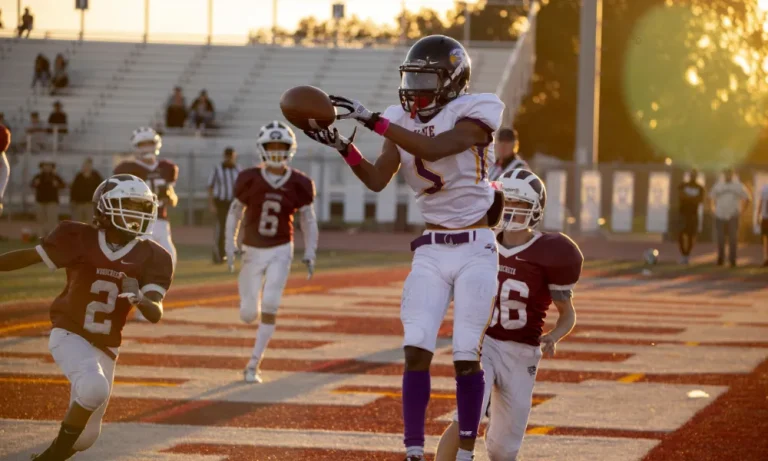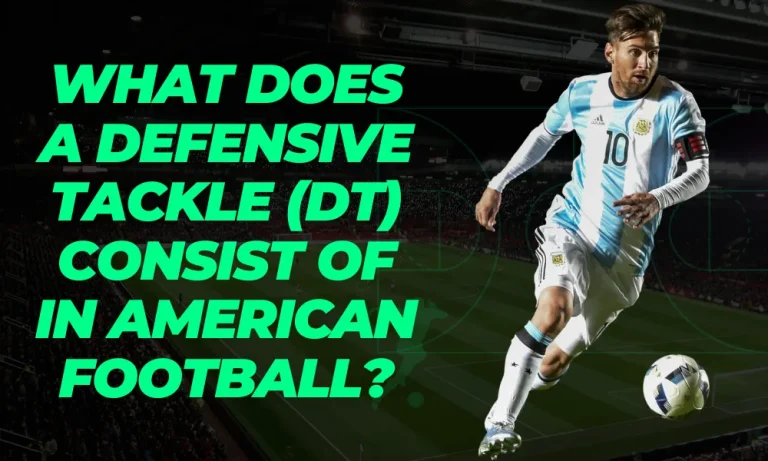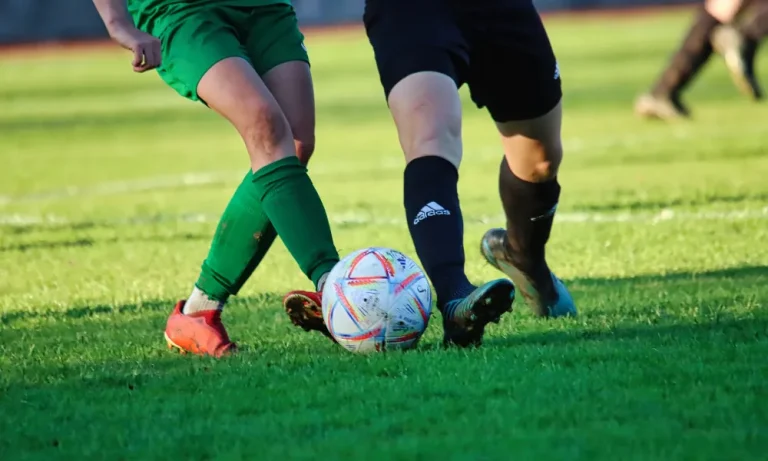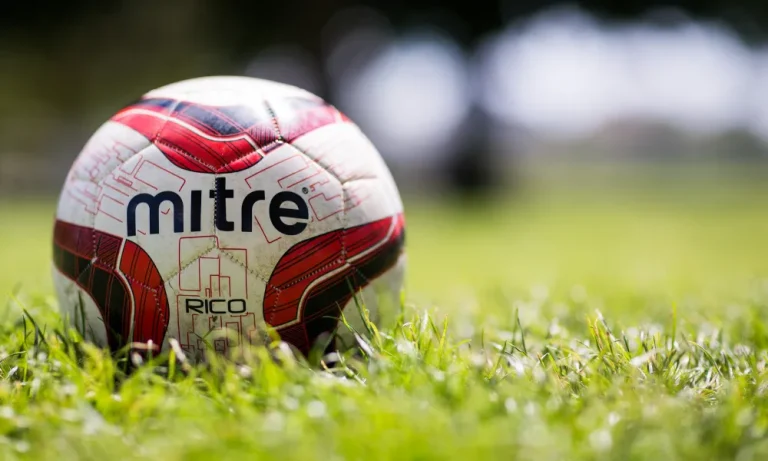Why Don’t Football Players Wear Knee Pads Anymore?
Are you wondering why football players have ditched knee pads? Well, in this blog post, we’ll unravel the mystery behind this trend. Football, a sport known for its physicality, used to rely heavily on protective gear like knee pads.
However, times have changed, and modern players seem to have abandoned this essential piece of equipment. Let’s dive into the reasons behind this shift and explore the fascinating world of player safety in football.
Rule Changes and Safety Measures
Over the years, football has witnessed significant changes in its rules and safety regulations. These transformations have had a direct impact on the use of knee pads, as the focus shifted towards other protective gear like helmets and shoulder pads.
Evolution of Football Rules and Safety Regulations
Football authorities have continuously worked to enhance player safety by implementing rule changes and safety measures.
These changes aim to minimize the risk of injuries during gameplay. As a result, the game has become more structured and regulated, with specific guidelines for player conduct and equipment usage.
Impact on the Use of Knee Pads
With the introduction of stricter safety regulations, the necessity of knee pads has somewhat diminished. The focus has shifted towards protecting the head, neck, and shoulders, as injuries in these areas can have severe consequences.
Consequently, players and teams have prioritized the use of helmets and shoulder pads, which are now considered essential for player safety.
Importance of Helmets and Shoulder Pads
Helmets provide crucial protection against head injuries, such as concussions, which have gained significant attention due to their long-term effects on players’ health.
Shoulder pads, on the other hand, safeguard the upper body, protecting against collarbone fractures, shoulder dislocations, and other related injuries.
Player Preferences and Performance
When it comes to wearing knee pads, player preferences and their impact on performance cannot be overlooked.
Players’ Perspective on Knee Pads
Many players have voiced their opinions on wearing knee pads, with some expressing discomfort and restriction of movement as the primary reasons for avoiding them.
They argue that knee pads can limit agility and flexibility, hindering their ability to perform at their best on the field. This perspective has influenced the decision of numerous players to forgo knee pads altogether.
Hindrance to Mobility and Performance
The concern regarding knee pads impacting mobility and performance is not unfounded. Football is a fast-paced sport that requires quick movements, agility, and precise footwork.
Knee pads, while providing protection, can add bulk and restrict the natural range of motion, potentially hindering a player’s ability to maneuver and perform optimally.
Influence of Professional Players
Professional players hold significant influence over trends in the sport. When influential players choose to forego knee pads, it sets a precedent for others to follow suit.
The desire to emulate successful athletes, combined with the perception that knee pads may impede performance, has contributed to the declining use of knee pads among players at all levels.
Advances in Technology
Advancements in technology have revolutionized football gear, including knee pads, making them less necessary than before.
Advancements in Football Gear Technology
Football gear technology has come a long way, with designers and manufacturers constantly pushing boundaries to improve player safety and performance.
New materials, such as lightweight yet durable synthetic fabrics, have replaced traditional heavy padding, making gear more comfortable and functional.
Impact on Knee Pads
The introduction of innovative materials and design techniques has significantly reduced the reliance on knee pads. Modern football pants now incorporate padding in strategic areas, including the knees, providing ample protection without the need for separate knee pads.
This integration ensures enhanced mobility and flexibility, addressing players’ concerns regarding restricted movement.
Development of Integrated Padding in Football Pants
Integrated padding in football pants has become a game-changer. The padding is strategically placed to offer targeted protection to vital areas, such as the knees, hips, and thighs.
This design innovation eliminates the need for additional knee pads, as the pants themselves provide sufficient cushioning and impact absorption.
With integrated padding, players can focus on their performance without compromising on safety. The advancements in technology have not only made football gear more efficient but have also contributed to the reduced reliance on individual knee pads.
Risk Assessment and Liability
When it comes to player safety in football, the potential risks associated with not wearing knee pads cannot be ignored. In recent years, the responsibility for player safety has shifted from the individual to the league and teams.
Potential Risks of Not Wearing Knee Pads
Choosing not to wear knee pads exposes players to various risks. Knee injuries, such as sprains, strains, and contusions, are common in football due to the high-impact nature of the sport.
Without proper protection, players are more susceptible to these injuries, which can have long-term consequences on their performance and overall well-being.
Shift in Responsibility for Player Safety
In recognition of the inherent risks in football, the responsibility for player safety now lies with the league and teams.
They are tasked with implementing and enforcing safety regulations, including using appropriate protective gear. This shift ensures that players are adequately protected and minimizes the potential for liability in case of injuries.
FAQs: Why Don’t Football Players Wear Knee Pads Anymore?
1. Have knee pads become obsolete in modern football gear?
Knee pads have not become obsolete, but advancements in technology have led to the development of integrated padding in football pants, providing sufficient knee protection without the need for separate knee pads.
2. Do integrated knee pads in football pants offer the same level of protection as standalone knee pads?
Yes, integrated knee pads in football pants are designed to offer targeted protection to the knees, hips, and thighs. They provide sufficient cushioning and impact absorption, comparable to standalone knee pads.
3. How do new materials and design innovations make knee pads less necessary?
New materials, such as lightweight synthetic fabrics, have replaced traditional heavy padding, making gear more comfortable and functional. Design innovations have allowed for the integration of padding into football pants, reducing the need for separate knee pads.
4. Are there any risks associated with not wearing knee pads in football?
Yes, not wearing knee pads exposes players to potential knee injuries, including sprains, strains, and contusions. Knee pads provide an extra layer of protection, minimizing these risks.
5. Who is responsible for ensuring player safety and the use of protective gear in football?
The responsibility for player safety has shifted to the league and teams. They are tasked with implementing and enforcing safety regulations, including using appropriate protective gear like knee pads, to minimize injuries and liability.
Conclusion
The evolution of football gear technology has made knee pads less necessary for today’s players. With advancements in materials and design, integrated padding in football pants now provides sufficient protection for the knees, allowing for improved mobility and flexibility on the field. Football players can now focus on their performance without compromising their safety.




